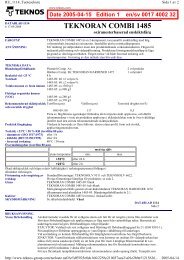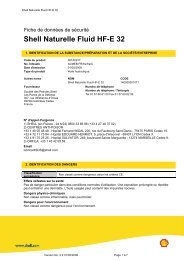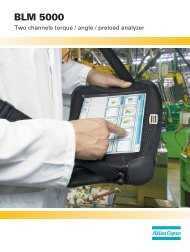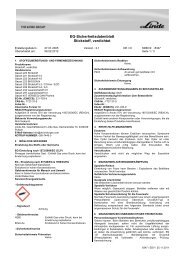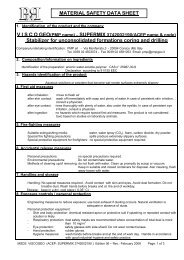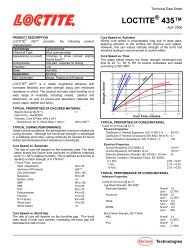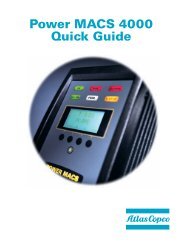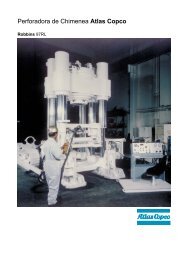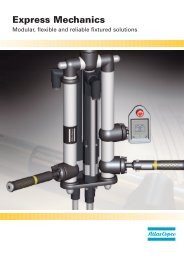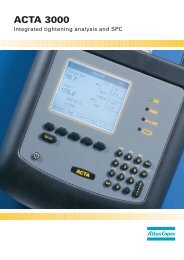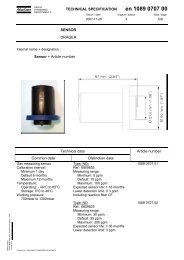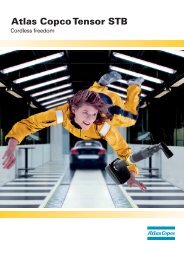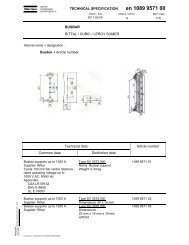Ergonomics - Atlas Copco
Ergonomics - Atlas Copco
Ergonomics - Atlas Copco
Create successful ePaper yourself
Turn your PDF publications into a flip-book with our unique Google optimized e-Paper software.
112<br />
RRH machines serves two functions. It acts<br />
as a mass spring system to isolate vibra-<br />
tions, while conveying feed forces from the<br />
handle to the process.<br />
The mobile cylinder and valve system<br />
are housed in a low-friction bearing in the<br />
machine housing. At one end of the cylinder<br />
there is a servo piston.<br />
When the hammer is fitted with a<br />
riveting die and pressed against a rivet,<br />
the first task of the damping system is to<br />
transfer feed force applied to the handle to<br />
the rivet. When force is applied, the servo<br />
piston moves backwards inside the tool,<br />
gradually exposing an inlet hole into a<br />
volume in the handle. At the same time, it<br />
gradually closes an outlet hole. Air pres-<br />
sure in the volume in the handle then<br />
increases until there is a balance between<br />
the inlet and outlet flow.<br />
Pressure acting on the damping piston<br />
produces a force that corresponds to the<br />
feed force. If the feed force increases or<br />
decreases, the system responds with a cor-<br />
responding pressure change. This change<br />
has a limiting frequency of about 5 Hz.<br />
With faster changes, such as the im-<br />
pact rate of the hammer, the system will<br />
not have time for air pressure changes in<br />
the volume. Thus, that volume of air now<br />
acts as a spring, the handle is a mass and<br />
the system has efficient vibration isolation<br />
(weighted value



